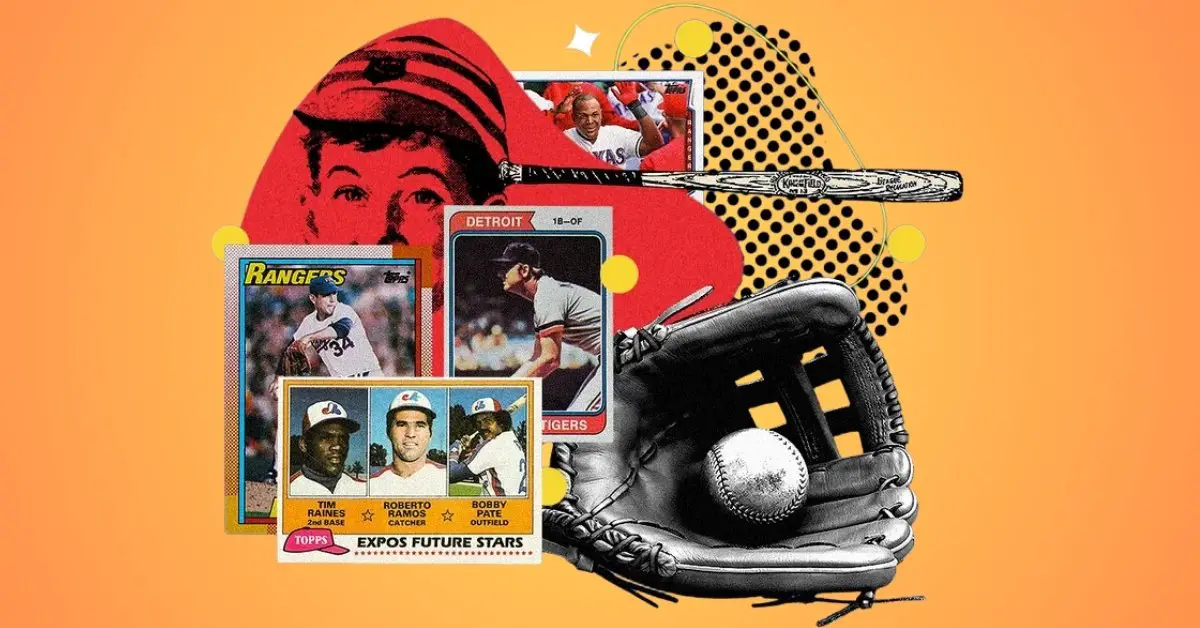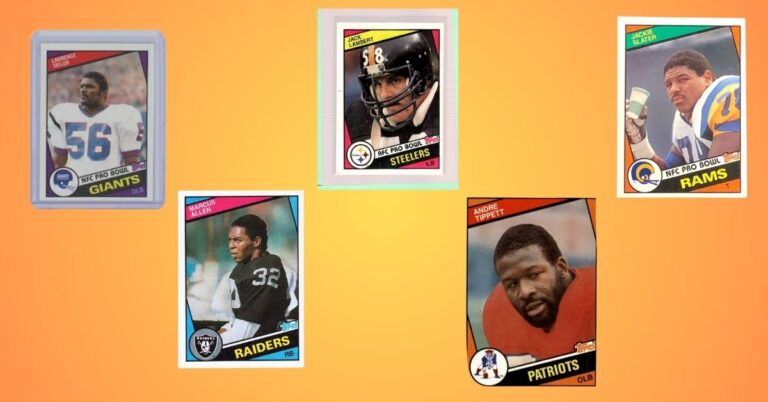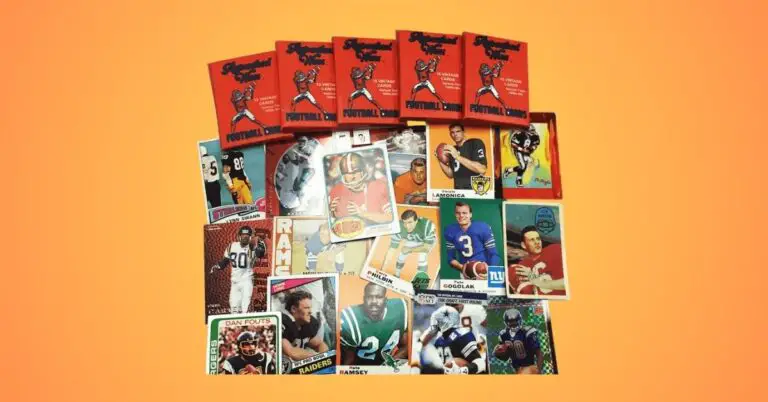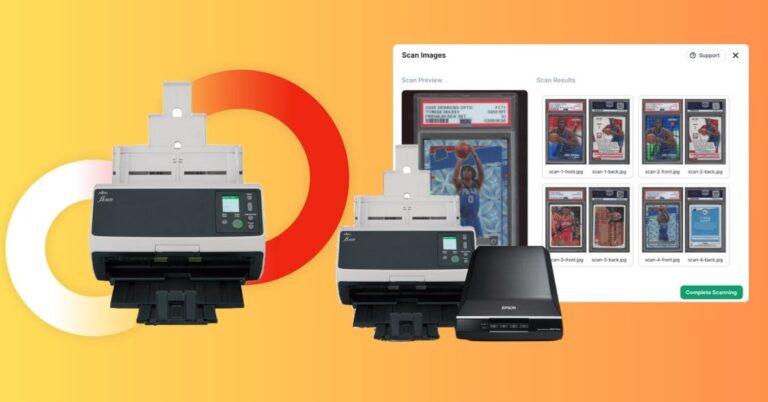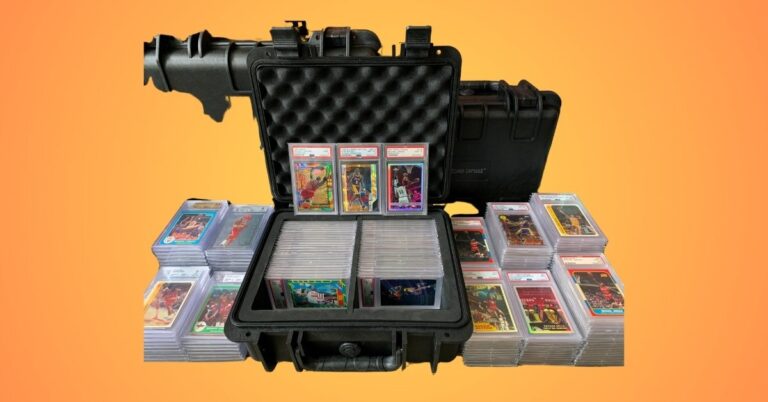What is Junk Wax? | Best Sports Card Era 1980 to 1990
Stacks of glossy cards from the late 1980s and early 1990s, seemingly infinite in number and brimming with nostalgia. Many collectors admire their charm, others dismiss them as mere relics of a bygone era—an overproduction that flooded the market and led to an unexpected downturn in value.
What is junk wax? It isn’t just a label for those surplus cards; it encapsulates an era defined by rapid production techniques and speculative buying practices. Join us as we explore why junk wax is more than just a name. It is an interesting part of the story of collecting sports cards!
What is Junk Wax Sports Cards?
The junk wax sports card era lasted from the late 1980s to early 1990s. During this time, card manufacturers produced a huge number of cards to satisfy high demand. Brands like Topps, Fleer, and Donruss flooded the market, making even stars like Michael Jordan and Bo Jackson very common.
This oversupply lowered their value but also created many fond memories for collectors, as kids often traded these colorful cards on playgrounds or at local shops.
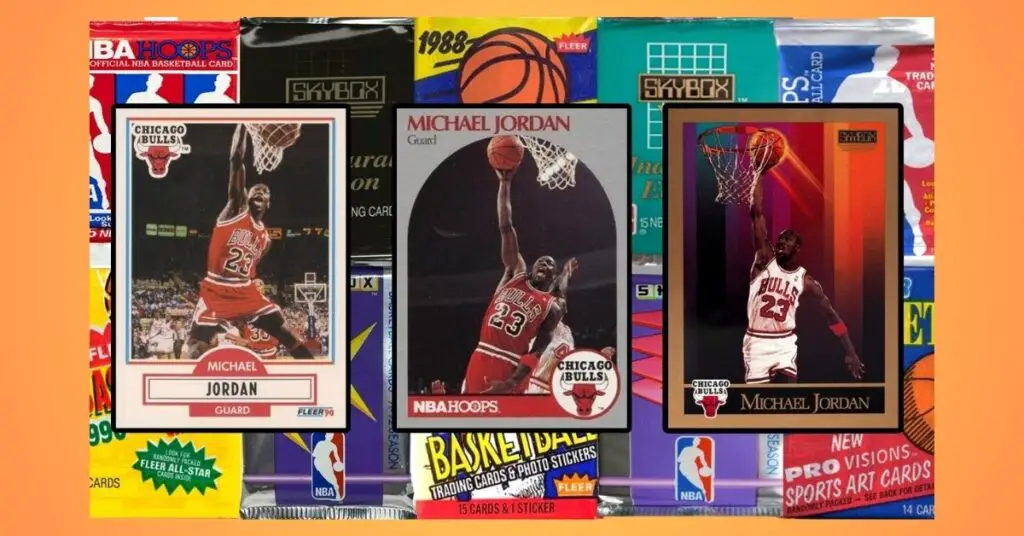
These cards may not be worth much to serious investors, they remain beloved reminders of personal history and happy times spent with friends and family.
What are Some of the Most Iconic Cards from the Junk Wax Era?
What is junk wax era? The junk wax era, spanning from the mid-1980s to the early 1990s, is often remembered for its uncommon production of trading cards, flooding the market with excess designs and player images. Amongst this sea of cardboard emerged several iconic cards that have since become treasured gems for collectors.

Here is the list of most Iconic cards from the Junk Wax era:
- 1989 Upper Deck Ken Griffey Jr. Rookie Card (#1):
- 1990 Score Bo Jackson Football/Baseball (#36):
- 1992 Bowman Mariano Rivera Rookie Card (#302):
- 1987 Donruss Greg Maddux Rookie Card (#36):
- 1991 Topps Chipper Jones Rookie Card (#333):
- 1984 Topps John Elway Rookie Card (#63):
- 1984 Donruss Don Mattingly Rookie Card (#248):
1989 Upper Deck Ken Griffey Jr. Rookie Card (#1):
The best card from the junk wax era, it marks the height of mass production and a change in sports card collecting. With its sleek design and famous hologram, it set new standards for collectors.
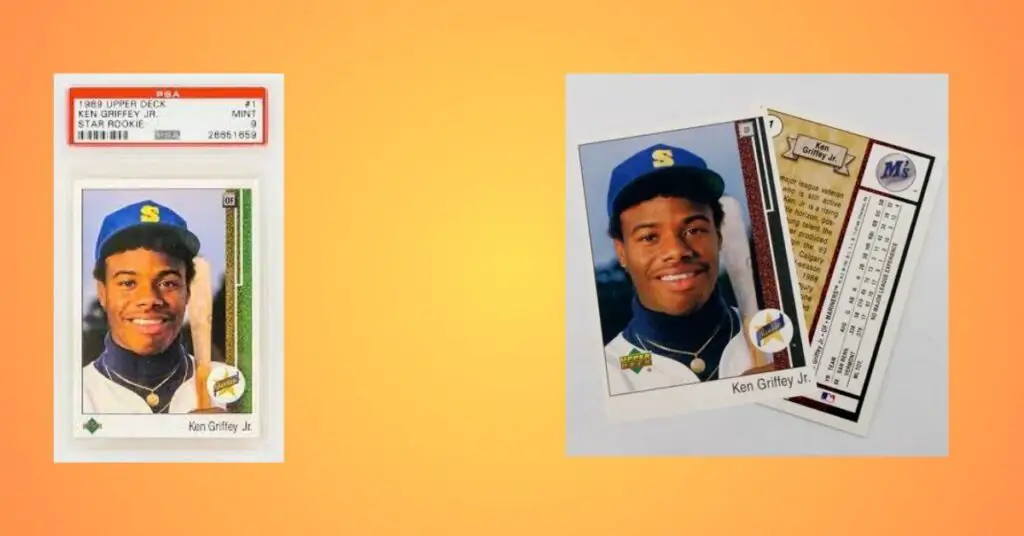
This card tells the story of Griffey Jr.’s rise as a baseball star, making it more than just a collectible, it is a piece of sports history.
1990 Score Bo Jackson Football/Baseball (#36):
This card symbolizes not just Jackson’s unique dual-sport athleticism but also manufacturers were trying to capture lightning in a bottle.
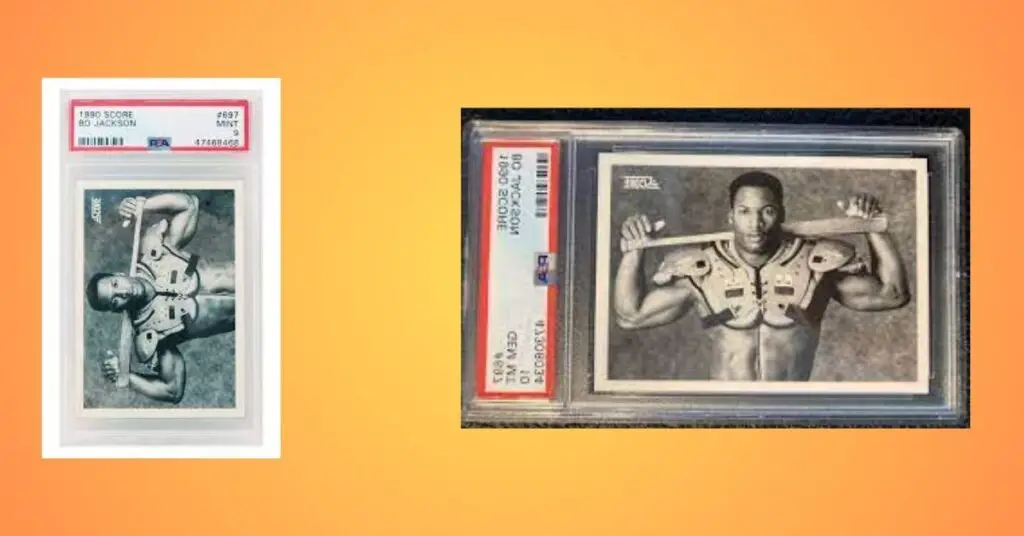
Collectors often regard this card as typical of both Bo’s influence and the era’s oversaturation of product, highlighting how one player could single-handedly frame a generation’s sporting identity.
1992 Bowman Mariano Rivera Rookie Card (#302):
It overlooked during its initial release in an era booming with mass-produced cards, Rivera’s card has accumulated intensive value and applause over time due to his legendary status as one of baseball’s greatest closers.
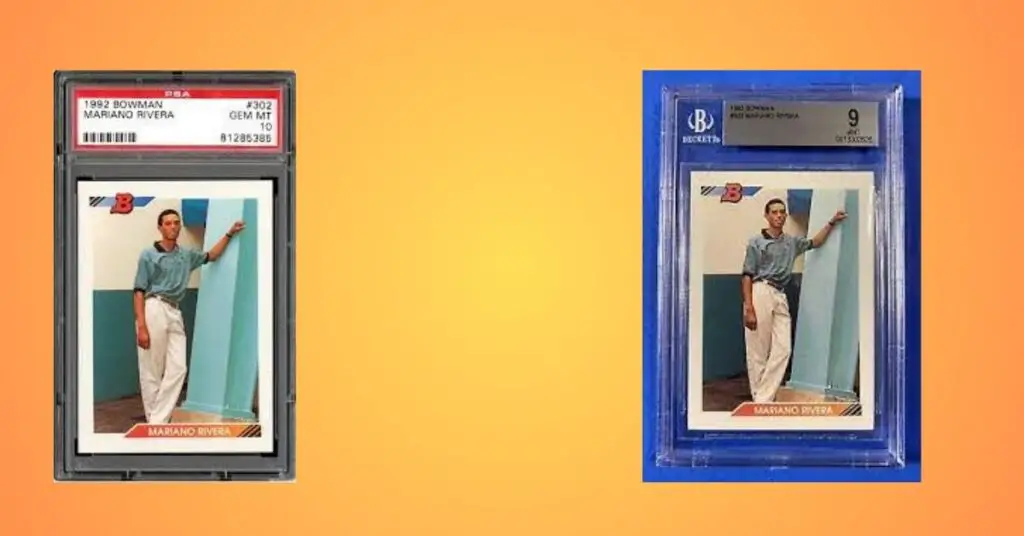
At this period, it becomes clear that some seemingly unremarkable cards have transformed into symbols of an entire generation’s love for sports and collecting.
1987 Donruss Greg Maddux Rookie Card (#36):
It symbolizes the dawn of a new wave in baseball card collecting, where high print runs led to an explosion of options yet birthed iconic gems like Maddux’s rookie.
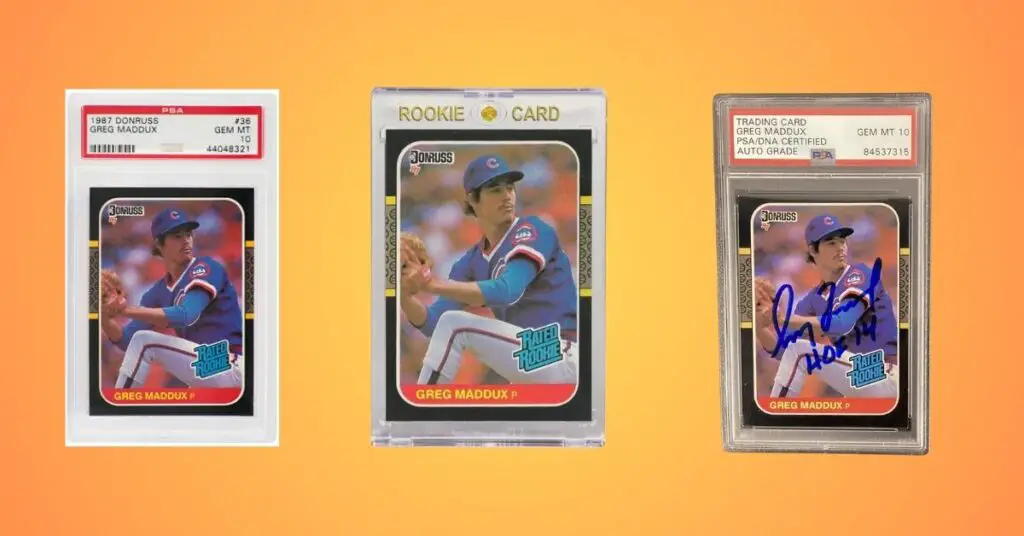
Collectors appreciate this card not only for Maddux’s impressive Hall of Fame career as a pitcher—boasting four Cy Young Awards—but also for how it captures the late ’80s vibe with its vibrant purple borders and dynamic design.
1991 Topps Chipper Jones Rookie Card (#333)
The mid-1980s to the early 1990s is celebrated for its excess and the explosion of production that brought a turning point in baseball card culture. Among its most iconic offerings is the 1991 Topps Chipper Jones Rookie Card (333), which not only represents an essential piece of memorabilia from a beloved player but also serves as a bridge connecting generations of fans.
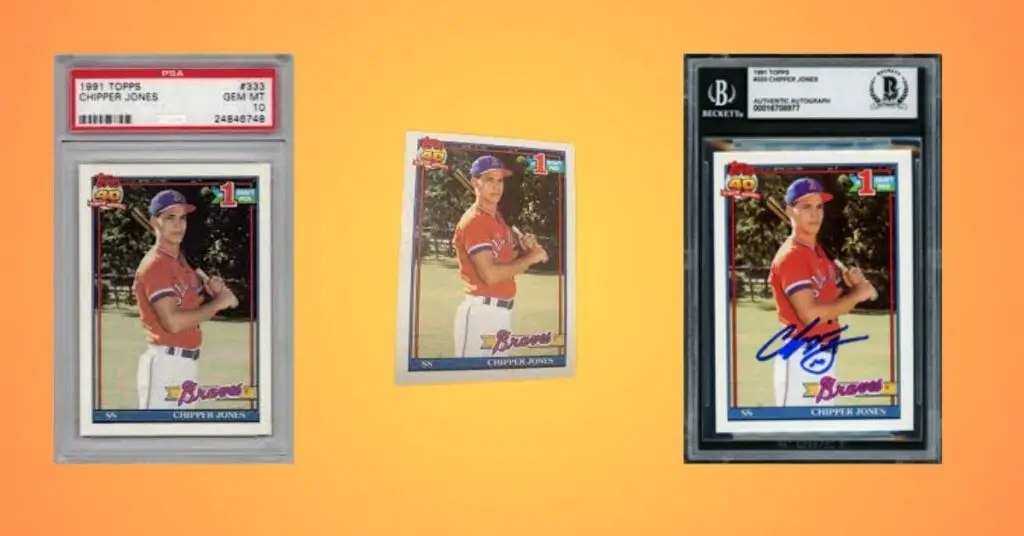
As collectors continue to sift through mountains of cards from this period, Jones’s rookie card emerges as a symbol of hope and nostalgia, encapsulating both his promising career and a transformative time in sports marketing.
1984 Topps John Elway Rookie Card (#63):
It capturing the spirit of a time when card production exploded. As one of only three high-profile quarterbacks in that draft class alongside Dan Marino and Jim Kelly, Elway’s rookie card symbolizes not just an individual player’s journey but also a shift in the landscape of football fandom.
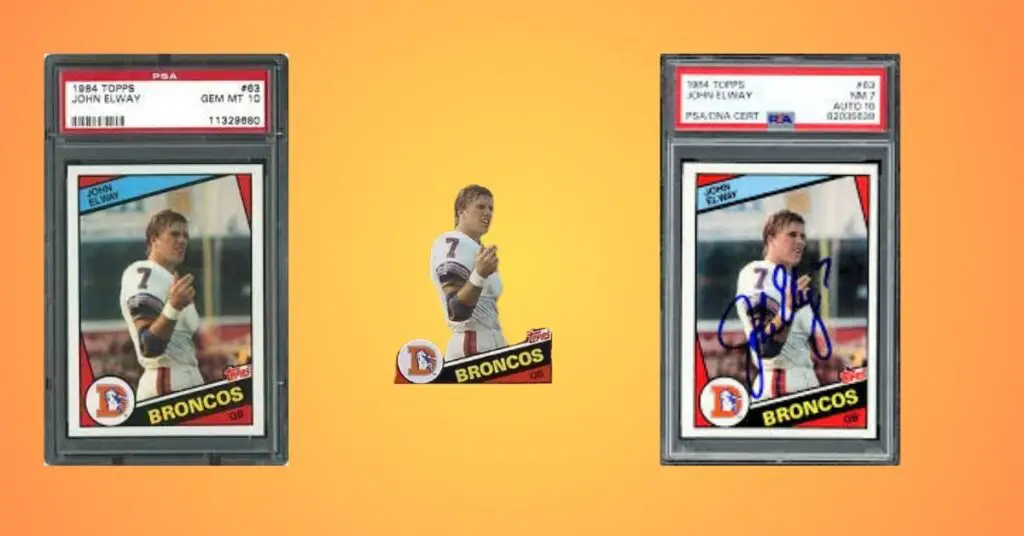
The card features eye-catching action shots against a bright yellow background, adding to its visual appeal.
1984 Donruss Don Mattingly Rookie Card (#248)
The late 1980s to early 1990s, is often remembered for its excess of baseball cards produced by major companies like Donruss and Topps. Among the standout collectibles from this period, the 1984 Donruss Don Mattingly Rookie Card (#248) has achieved almost mythical status among addicts.
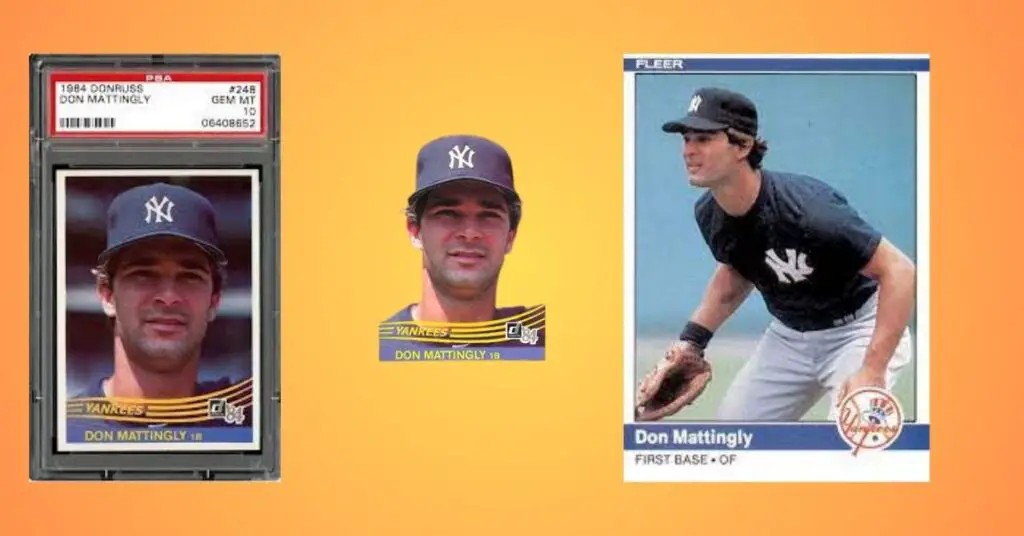
The bold graphics and vibrant colors invoke a sense of excitement that vibrates with collectors who lived through that time.
Conclusion
What is Junk wax? it is unique in the collectible card market, characterized by overproduction and a wide range of iconic designs. While many devotees initially viewed these cards as worthless, their value and connection to childhood memories have led to a resurgence in interest among collectors today.
Notable cards from this period, such as the 1989 Ken Griffey Jr. rookie card and the 1990 Hoops David Robinson, continue to captivate both new and seasoned collectors alike. Whether you’re rediscovering your old collection or just starting out, now is an excellent time to explore the fascinating world of junk wax sports cards.
FAQs
How do Refactor Sports Cards Differ From Junk Sports Cards?
Refactor sports cards, often featuring holographic or special foil finishes, are limited in production and generally hold higher value compared to junk sports cards.
How can I Identify Junk Wax Cards?
Junk wax cards typically feature glossy finishes, mass production numbers, and come from brands like Topps, Fleer, Donruss, and Score during the specified era (1986-1994).
Why are These Cards Called Junk?
The term junk is used because many of these cards were produced in excess, leading collectors to view them as common and less valuable compared to earlier or more limited editions.
Can Junk Wax Cards be Worth Collecting?
Yes! Many collectors enjoy junk wax for nostalgia and the thrill of hunting down specific players or sets; they can also be fun for beginners entering the hobby.
What should I do With my Junk Wax Collection?
You may choose to keep them for sentimental reasons, donate them to youth leagues or schools, sell them at local card shows, or even attempt to trade with other collectors.

